The Importance Of Muscle Mass For Your Health
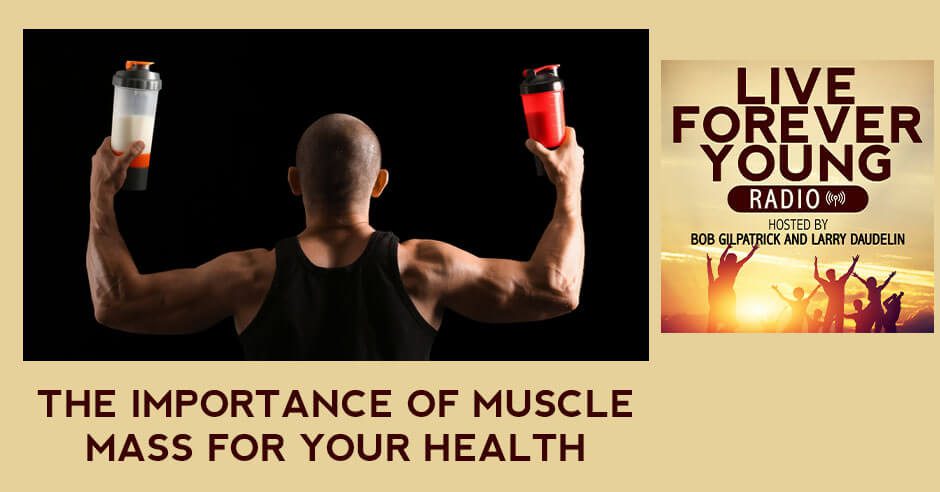 Did you know that as you age, you lose muscle mass? There are ways to lessen the impact of muscle loss, and Bob Gilpatrick and Rollie Culp discuss the how-to. They talk about the most common reasons for muscle loss and what problems it causes to your health. Bob and Rollie then identify some easy exercises you can do to help build and prevent muscle loss. We also get some diet advice to help us along the way. So sit back, relax, and get ready to live forever young.
Did you know that as you age, you lose muscle mass? There are ways to lessen the impact of muscle loss, and Bob Gilpatrick and Rollie Culp discuss the how-to. They talk about the most common reasons for muscle loss and what problems it causes to your health. Bob and Rollie then identify some easy exercises you can do to help build and prevent muscle loss. We also get some diet advice to help us along the way. So sit back, relax, and get ready to live forever young.Watch the podcast here:
Listen to the podcast here:
The Importance Of Muscle Mass For Your Health
Use It Or Lose It
Did you know that as you age, you naturally lose muscle mass? On the show, Bob and Rollie talk about the importance of maintaining and building muscle mass, especially as you get older. They discuss the most common reasons for muscle loss and what problems it can cause for your health and activity levels. Bob and Rollie also identify some easy exercises you can do to maintain and build muscle as well as what you can add to your diet to help build and prevent muscle loss. Sit back, relax, and get ready to live forever young.
Welcome, Rollie. How's it going? Great. I see in honor of the Tampa Bay Lightning hockey team on their quest for the three-peats for the Stanley Cup and your hat is for the Super Bowl champs, Tampa Bay Buccaneers are also now on their quest for winning the Super Bowl the second year in a row.
It always matches when you are champions. It doesn't matter the color. It matters that you're the champions. One of the things that you must have to perform like we always talk about at a high level, is muscles. One of the things that we wanted to talk about was the importance of muscle mass, maintaining it, and building it as you get older. A lot of people don't realize this, but you only gain muscle up until about your 30s.
What happens after that? You start to lose muscle right after that by the time you're 50. 15% of it is gone or between 10% and 15%. Every decade thereafter, you lose about 10% more. By the time you get to be older, you're going to have lost a lot of muscle. This is not good because you're going to end up having bad posture, along with a lot of other things we'll talk about in a minute.
The way that losing muscle mass occurs is as you age, your mitochondria don't work as well. Your mitochondria produce energy, which gives power to all your metabolic pathways, including the pathway that makes muscle. When you start losing mitochondria or start working less efficiently in your muscle cells, that's what's going to happen. That happens to the mitochondria all over your body.
Especially in the muscles, where the main thing is you need to create new cells. Creating new cells means the creation of new tissue. If those cells are being created properly, the tissue that they're forming, which would be muscle here, it's formed with abnormalities.
It will have SNPs in your DNA. When you replace muscle cells, you're doing it with stem cells. Stem cells that are being released from your bone marrow are becoming muscle cells. As you age, you make less of those adult stem cells. We talked about that in an episode we did with Ann Harrison called The Importance of Stem Cell Nutrition.
At the very end, when we talk about the nutrients that people need to maintain their muscle mass, we'll talk about a special product that helps with your stem cells. When you start to lose muscle, not only are you going to have poor posture, which is bad. Poor posture drags you down. Usually, your head is lower. You're not looking up and looking at people. It's pulling on your muscles as you get poor posture, and neck muscles pull on your back muscles.
It's a good example, but you see people who are older at the grocery store. A lot of the time, they're using their cart, and that's got to hurt. Their balance is poor. They have a risk of falls. The most important thing is as you lose muscle, you also lose bone density. If you fall because you don't have good posture and balance because you've lost muscle, you're likely to break a bone.
I remember when my grandma was having her house repainted and the guys laid out the plastic drop cloth. She was still doing pretty well and in her 60s. She heard the phone ring, come running around the corner, didn't see the drop cloth, and tripped on it. That was the first time she broke her hip. She was pretty strong even for 65 at that point. She's running around the corner and in good shape.
Even if you have a good amount of muscle, as you get older, your bones get more brittle and they aren't quite as dense. The less muscle you have, the more brittle your bones are going to be. I could imagine if you're much less muscle, you would have much more brittle bones, which is not a good combo.
You have a diminished mood, meaning your normal good mood is based on your capability to get up and do things. You probably are going to have issues with being in a good mood, happy, and feeling productive. It can have a bad effect on your self-esteem. Here's the good news. We know exactly what to do, so you can gain back your muscle. 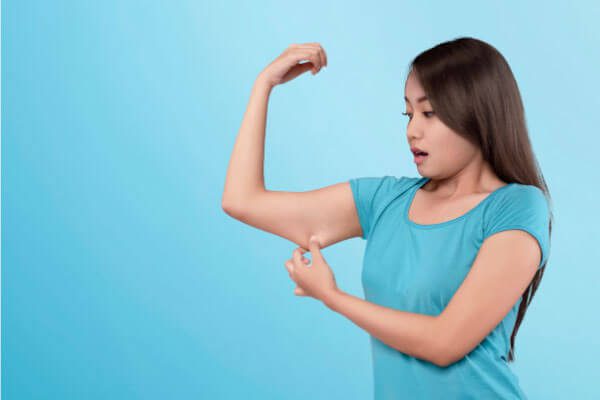 Muscle Mass: A lot of people don't really realize this, but you only gain muscle up until about your thirties. You start to lose muscle right after that. By the time you're 50, about 15% of it is gone unless you're Tom Brady.
Muscle Mass: A lot of people don't really realize this, but you only gain muscle up until about your thirties. You start to lose muscle right after that. By the time you're 50, about 15% of it is gone unless you're Tom Brady.
You can begin to gain back muscle faster than you would tend to lose it. If you're going to lose 10% a decade, that's 1% a year. If you do the following things that we're about to say, you can gain back muscle three times as fast. Over time, you'll begin to gain on revisiting yourself back to the level where you were at a much younger age.
I would imagine the first place to start was to stop living a sedentary life. Start trying not to sit on the couch for as long. Take small steps to get more active. The good thing about that is we've done an episode in the past on developing new habits. Habits To Help Seize the Day, check it out. That can be very helpful in getting into moving around more and exercising. You want to be able to do some resistance exercise.
That simply means you're going to be moving your joints using your muscles through a range of motion. For example, curling your arm up with some type of resistance, whether it's a stretch band that you're stretching or a weight that you're using. You can even do an isometric exercise where you take one hand, place it, put pressure on the hand you're going to curl up and, push against that resistance.
That will exercise your triceps in one arm while you're exercising the bicep in the other, and then switch. You're doing arm wrestling with yourself. You can do also other bodyweight exercises like pushups. You have to start from your knees and do it against the wall.
Against the wall is good if you can't do it on the floor at first because you're still getting that resistance from the wall to the arm to the chest, it’s very helpful. All of that will help you build muscle.
Here's this thing about working out. They say the strongest people are the people who are farmer strong. What is a farmer doing? They're working every day. Maybe not on Sunday, but six days a week they're working. What are they doing? They're moving around, picking up a bale of hay, lifting an attachment to their tractor, or putting it under the hitch.
Nothing where they're working out to complete fatigued or exhaustion, and they can't work for three days. Every day, they're doing some type of resistance exercise, squatting down, getting back up, using a hoe-to-hoe the fields, whatever it is. It's varied too. It's not always the same thing. You're using a bunch of different muscle groups. What you want to avoid is, “I'm going to the gym and workout until I'm exhausted, and I'm going to take two days off.”
You're way better off if you do a light workout and go back again the next day and do a light workout. Maybe on the third day, do a little bit more, and slowly over time, increase your resistance. These are the basics. You also want to do some cardio. There's a great one called Peak 8. The number 8 means 8 repetitions.
This is something you're going to do eight times and no more. You can either walk, run, pedal on a bicycle, on a rowing machine, whatever it is that's going to give you cardiovascular exercise. You're going to do 8 repetitions. Each repetition is going to last for 2 minutes. It's going to be 90 seconds, which is 1.5 minutes of very light exercise followed by 30 seconds of a burst of intense exercise. 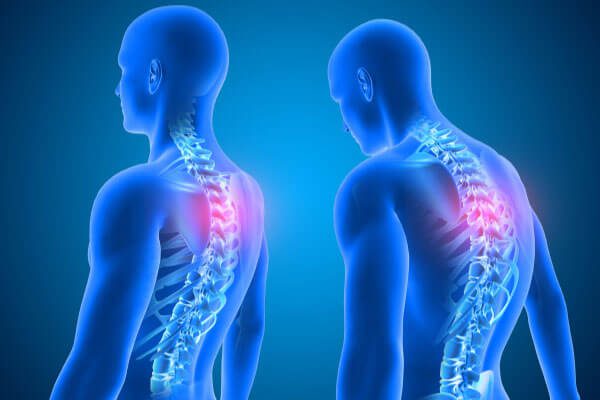 Imagine that I am going for a walk for about five minutes to get warmed up, and then I'm going to walk fast for 30 seconds. Count to yourself. When 30 seconds is up, you will then walk slowly for the next 90 seconds. You can have a stopwatch or a regular watch with you and count your steps. You'll need to figure out how many steps are in 90 seconds. You're going to be taking faster steps when it's 30 seconds. You’ll need to calibrate this for yourself. Some people can walk faster than others.
Imagine that I am going for a walk for about five minutes to get warmed up, and then I'm going to walk fast for 30 seconds. Count to yourself. When 30 seconds is up, you will then walk slowly for the next 90 seconds. You can have a stopwatch or a regular watch with you and count your steps. You'll need to figure out how many steps are in 90 seconds. You're going to be taking faster steps when it's 30 seconds. You’ll need to calibrate this for yourself. Some people can walk faster than others.
Have a stopwatch with you or a watch. Have that for the first time and figure out how many fast steps are in 30 seconds, and how many slow steps are in 90 seconds. It doesn't have to be perfect. That's the other good news. If you want to start, “I'm going to walk real fast for a little bit. It seems like about half a minute. For about three times that much time, I'm going to walk slow.”
This is called Peak 8. When you've done that eight 30-second bursts followed by eight 90 seconds slow, now you're done with your cardio. The reason you want to do it this way is when you do, your body releases more human growth hormone. Human growth hormone will help you build muscle. You're going to do some resistance exercises in your Peak 8. Your HGH goes up, and you'll build more muscle faster.
The natural way to release that is Peak 8. There are a lot of bodybuilders that want to know that secret. It's getting very popular. Some very famous doctors have been promoting it on their shows. What you were saying too about Peak 8 and with the way that farmers work is you want to work smart, not long. You don't want to work to the point of exhaustion because then you're not going to be good for the next 1 or 2 days.
You got to have a recovery day. What if you could work smartly, something you can handle, and work your way up? In that way, you can do a little bit every day as opposed to one big day and then a couple of days off. That's not good for consistency.
That's the exercise piece. There's also a big diet component to building muscle. Bodybuilders go through elaborate routines to build more muscle. For us, it's going to be a couple of simple things. Look at your diet and where your sugars are. If you want to know where your hidden sugars are, do a search on the internet for hidden sugars, or get the book called The Sugar Impact Diet by JJ Virgin. She's a great diet consultant that helps people see where the hidden sugars are and how to replace them.
Essentially, you want to replace them with good fats. One of the things I do is drink Bulletproof Coffee. It’s a very popular thing. Dave Asprey brought it about years ago. It's your coffee being put into a blender with good fats. MCT oil stands for Medium Chain Triglycerides, palm oil, coconut oil, and then you can put organic grass-fed butter in, which has good fats. You can put other things also that have good fats.
I started giving it to my daughter because we were trying to look at ways to get good fats into her diet. We started doing avocado toast. In the morning, we toast up some toast, smash up the avocado, and spread it on there like cream cheese or butter.
She likes it with chia seeds on top, which is weird. I usually use those to grow those little things with the hair on them, but she likes to eat them. I didn't even know you could eat them. Avocado toast is good. She gets good fats. It helps her out a lot, helps her stay regular, and builds muscle as a little kid.
That's a general tip on how to quickly alter your diet. The first thing people usually think about is supplements. There are thousands of studies about bone density and building muscle, everything from amino acids, L-carnitine, protein shakes, and all that. For your bones, the main thing you need is Vitamin D, the sunshine vitamin, which we've done an episode about.
It's called The Real Deal with Vitamin D. If you have Vitamin K, calcium, and magnesium together, you're able to keep the strength of your bones, which is one of the main things that is a difficulty with muscle loss. Make sure that you have those for keeping your bones strong. In order to build muscle, it’s built with protein. Protein is built with amino acids and metabolic enzymes.
Amino acids are little chains of carbon, hydrogen, oxygen, and nitrogen. They are spliced together with these enzymes, which are also made of the same thing. They're made into these beautiful elaborate proteins, some of which make your muscles. We have a product called Gladiator Barley, which is known very well for helping people gain muscle quickly and a lot of it.
It's legendary. It's what the gladiators used to eat. That's why it was called Gladiator Barley back in Roman times. They had a steady diet of it. When they found gladiator bones years later, in archeological digs, they were denser than the normal people of the time. It has some cool stuff. When they did the research on it, they found that a lot of it had to do with what they were eating, which is barley.
Gladiators were legendary for their muscular and bone strength. The amino acids and the metabolic enzymes that you need to build muscle are in the Gladiator Barley product.
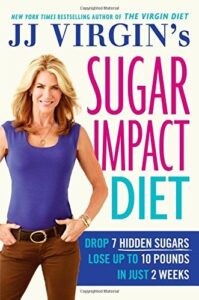
JJ Virgin's Sugar Impact Diet: Drop 7 Hidden Sugars, Lose Up to 10 Pounds in Just 2 Weeks[/caption] Most people don't realize that there are a lot of products out there that they make, not just for muscle building, but fundamental nutrition and overall health. I've never seen one that has any metabolic enzymes. Those are the enzymes that are rebuilt. We've got digestive enzymes, but the metabolic enzymes are very unique. The barley, because of the way it's sprouted, releases over 4,000 metabolic enzymes. They're created from the DNA of the barley. They're preserved and in this powder form. To the point when we have people that call us that are going through chemotherapy for various diseases, cancer, and other things, quite often, what happens is they begin to lose muscle weight very quickly. In fact, about 60% of the people that die, who have cancer, are dying from muscle wasting. Gladiator Barley was created for people that needed intense help to maintain and gain their muscle. I have firsthand experience with my aunt. She is recovering from cancer. I mentioned a couple of shows ago that she got throat cancer. When she told me that, I started telling her and making sure she got the barley and started taking it. The doctors were surprised at two things, how fast she was able to get her treatments done because she was able to get her treatments done without taking a break. She didn't miss any. She didn't have to take her last three treatments because she was able to get through them. She was able to get them closer and stronger together. The doctors were amazed at how fast she was able to get it done. She took barley the whole time. When she was close, she said, “I need you to send me some of that barley because that is what's helping me get through.” She wasn't eating because it was throat cancer, so it hurt. One of the few things she could take was the barley because you can mix it with water and drink it. She was using the Boomer Boost at the time too. She swears by it. It helped her out. You see her now compared to before. Normally, you see people that are thin, but she's still got the same mass that she had. It was a firsthand experience. It helps with that. I’m happy to hear about that and that all of you joined us on the show. Thank you very much. We will see you at the next show.
Important Links:
- The Importance of Stem Cell Nutrition - Previous episode
- Habits To Help Seize the Day - Previous episode
- The Sugar Impact Diet
- The Real Deal with Vitamin D - Previous episode
- Gladiator Barley
- Boomer Boost




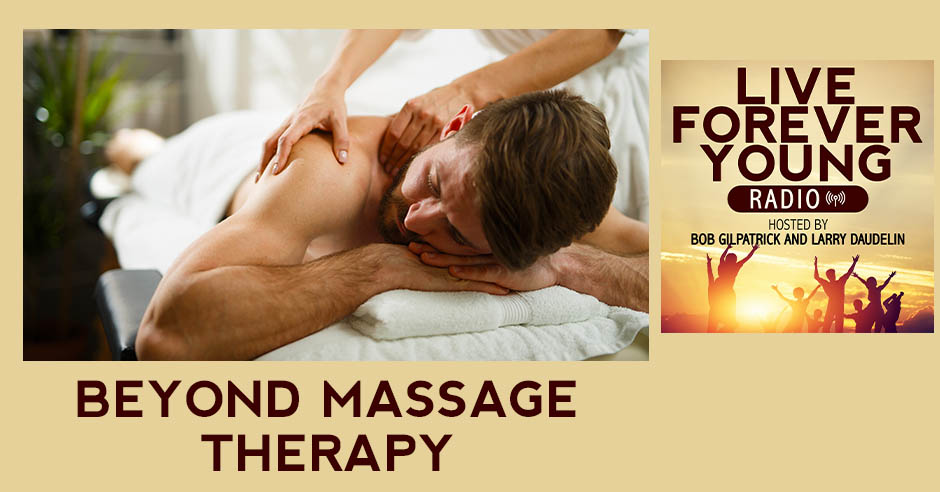
Leave a comment